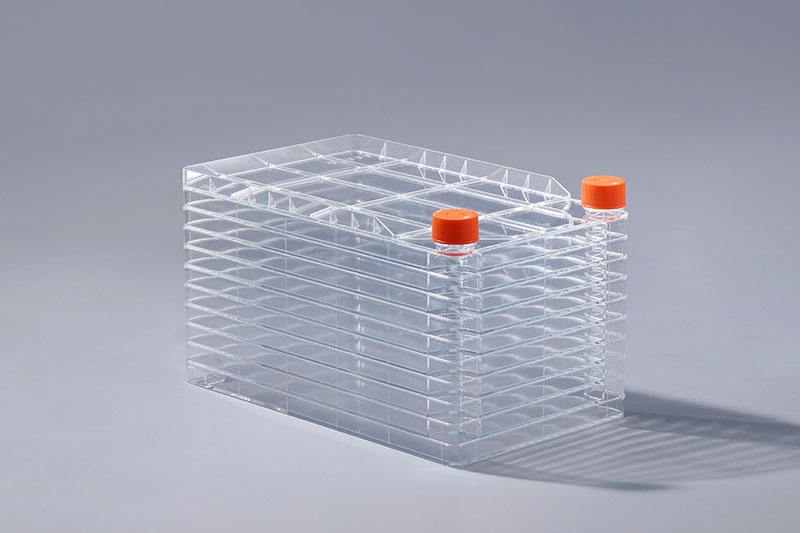Cell factories are suitable for industrial batch production, laboratory operations, and large-scale cell culture, and are ideal for adherent cells. As a cell culture consumable, what is its production process and how to control its quality?
1. Raw materials: High-quality raw materials are the basis for ensuring products. The cell factory uses USP Class VI compliant polystyrene to ensure batch-to-batch quality stability and consistency.
2. Injection molding: This consumable is produced by injection molding process, and is produced in a special 10,000-level clean room. After rigorous verification (planktonic bacteria, sedimentation bacteria, and suspended particle detection), quality management is carried out in accordance with the GMP workshop to ensure stable product quality.
3. Surface treatment: The polystyrene material itself is hydrophobic, so it must undergo surface treatment and introduce hydrophilic groups in order to better adapt to the growth of adherent cells.
FuDau 10 Layers Cell Factory
4. Assembly: The components of each layer after injection molding are assembled through a special process, without any added ingredients, reducing the risk of unknown dissolution.
5. Tightness detection: Ensuring that the container does not leak liquid is a key indicator to measure its quality.
6. Packaging and sterilization: packaging and sterilization should be carried out after ensuring the quality of the product. When sterilizing, the appropriate dose should be selected to ensure the final sterilization effect.
So far, a complete cell factory has been produced. The quality of the culture container is related to the smooth progress of the cell culture experiment, and every production detail is strictly controlled.
The FAI climbed 5.9 percent year-on-year in the first 11 months of 2018, quickening from the 5.7-percent growth in Jan-Oct, the National Bureau of Statistics (NBS) said Friday in an online statement.
The key indicator of investment, dubbed a major growth driver, hit the bottom in August and has since started to rebound steadily.
In the face of emerging economic challenges home and abroad, China has stepped up efforts to stabilize investment, in particular rolling out measures to motivate private investors and channel funds into infrastructure.
Friday's data showed private investment, accounting for more than 60 percent of the total FAI, expanded by a brisk 8.7 percent.
NBS spokesperson Mao Shengyong said funds into weak economic links registered rapid increases as investment in environmental protection and agriculture jumped 42 percent and 12.5 percent respectively, much faster than the average.
In breakdown, investment in high-tech and equipment manufacturing remained vigorous with 16.1-percent and 11.6-percent increases respectively in the first 11 months. Infrastructure investment gained 3.7 percent, staying flat. Investment in property development rose 9.7 percent, also unchanged.
 English
English



















































